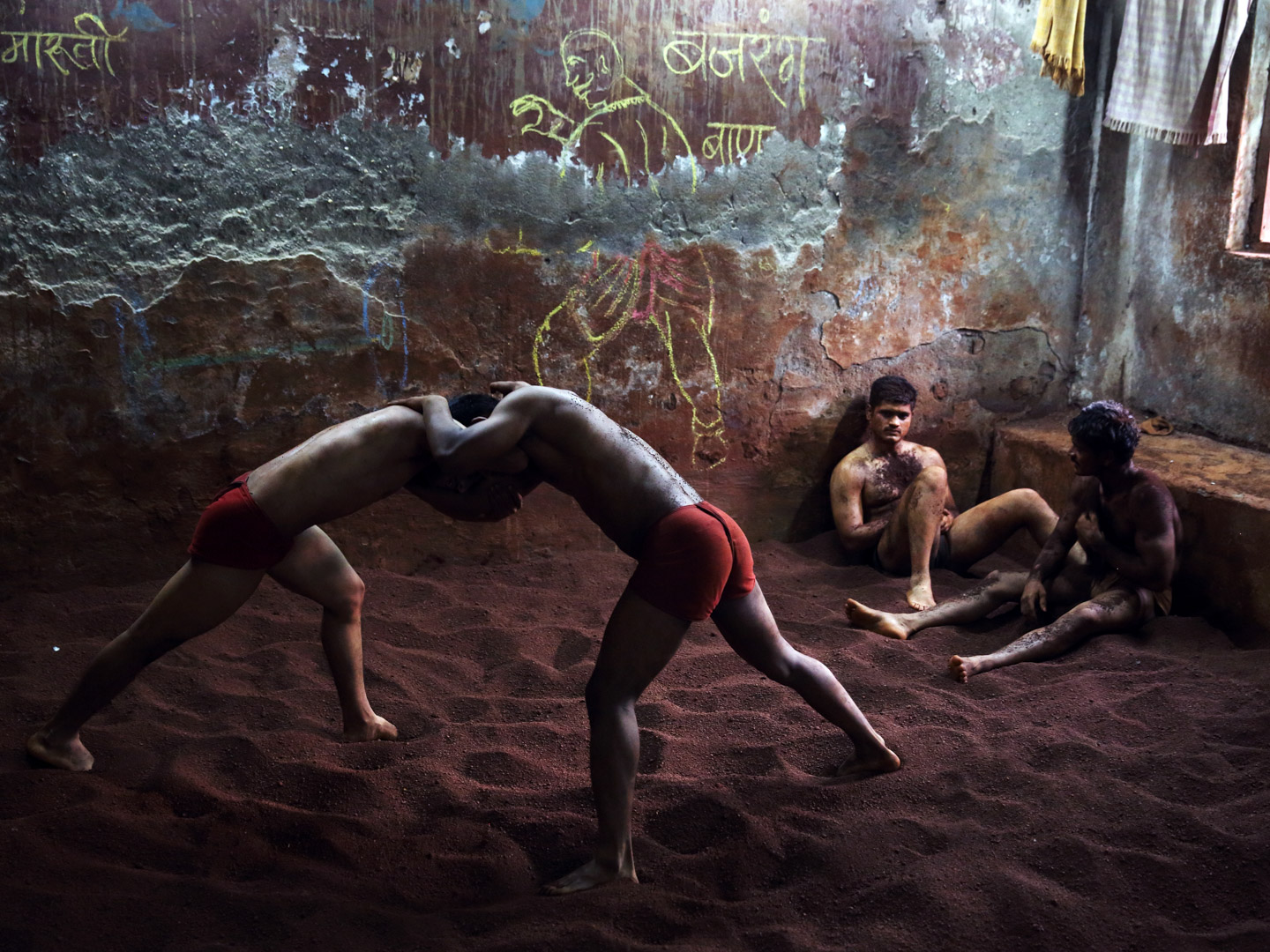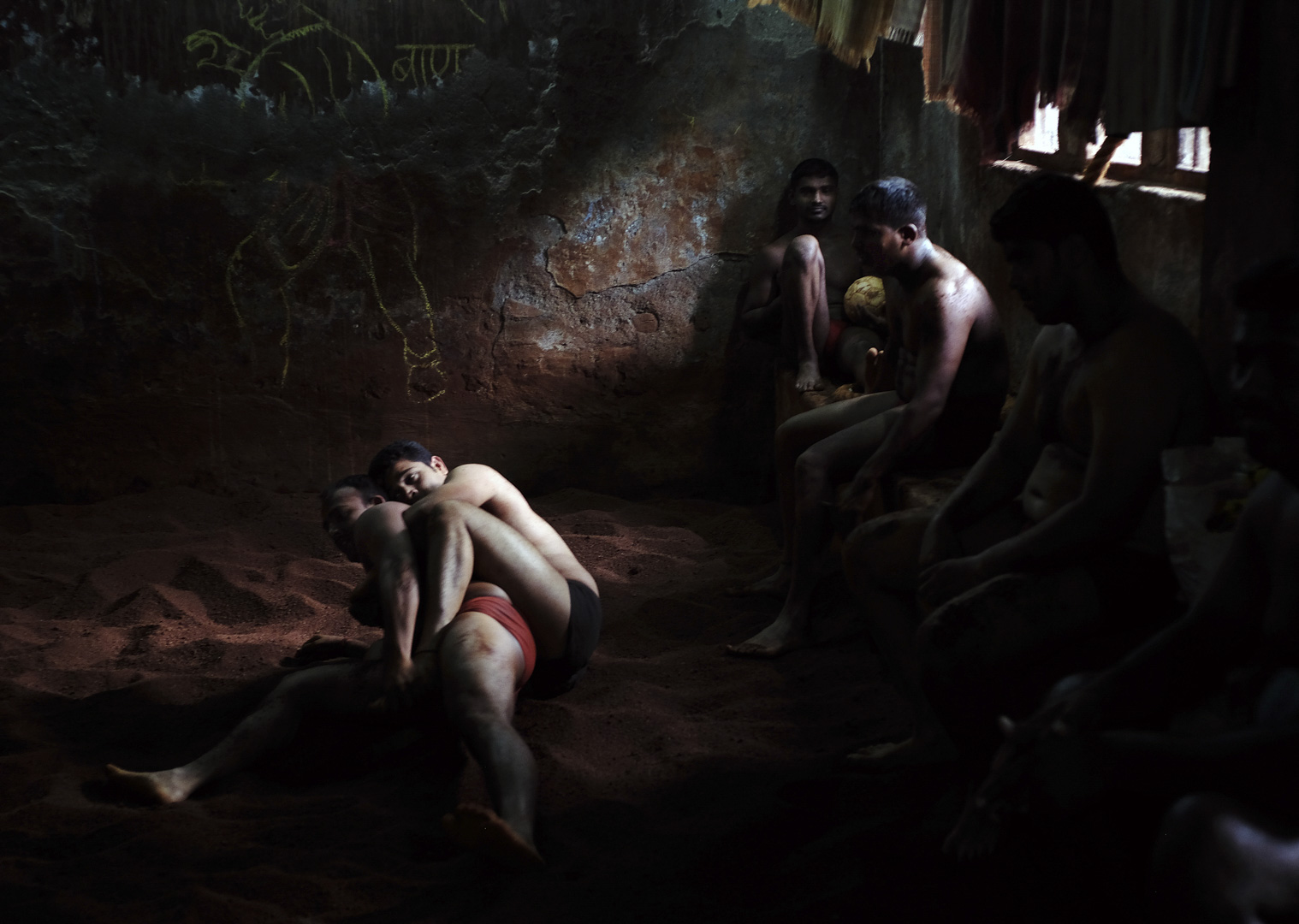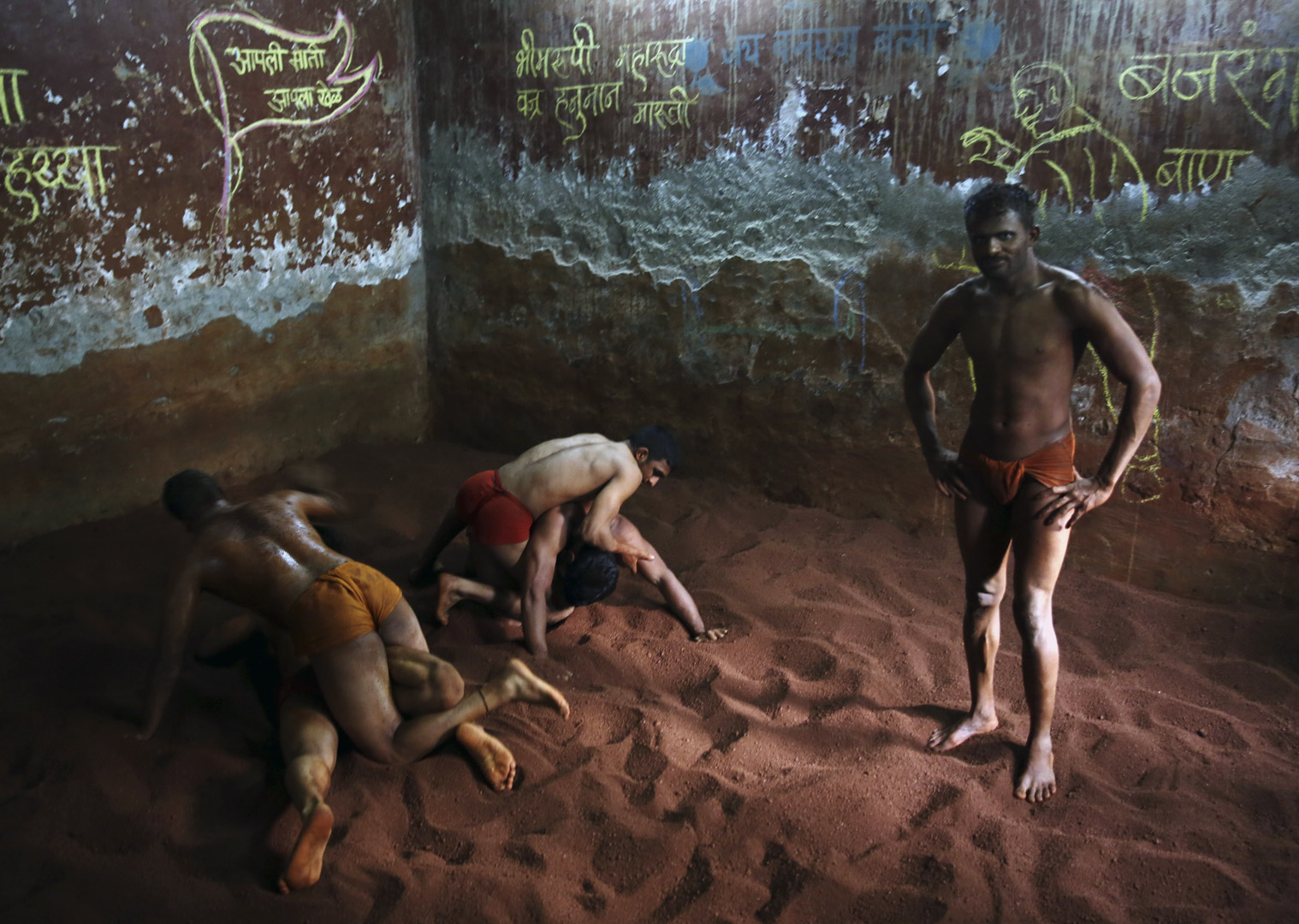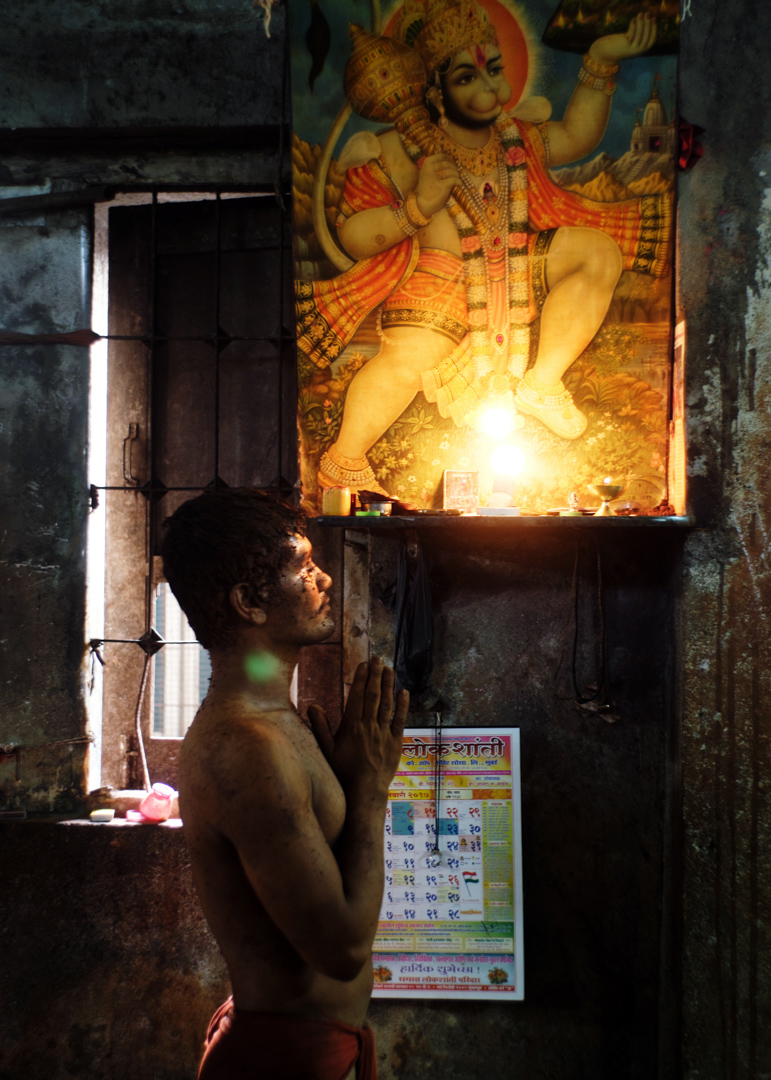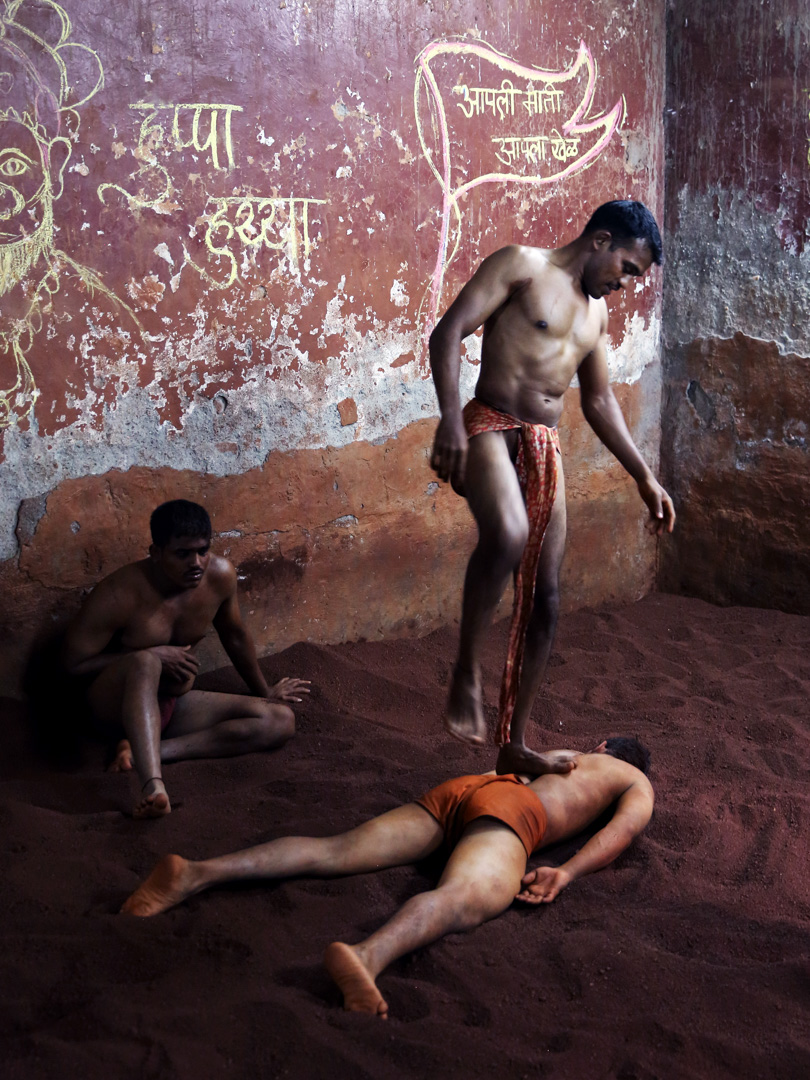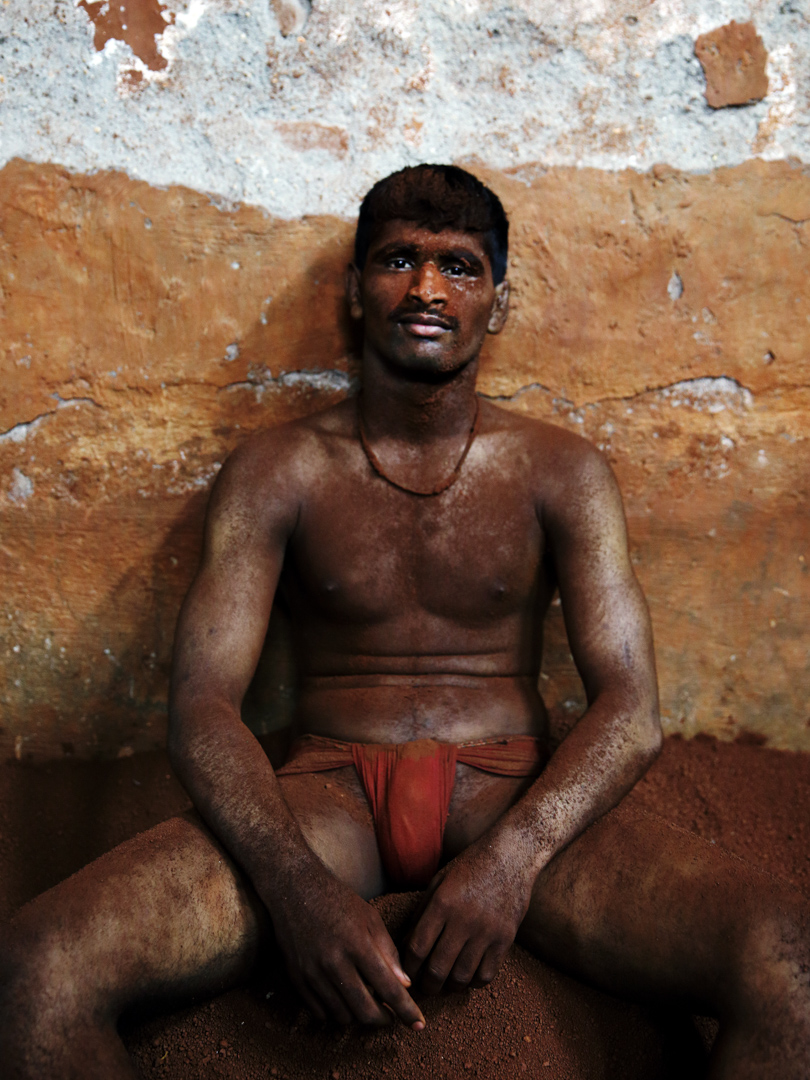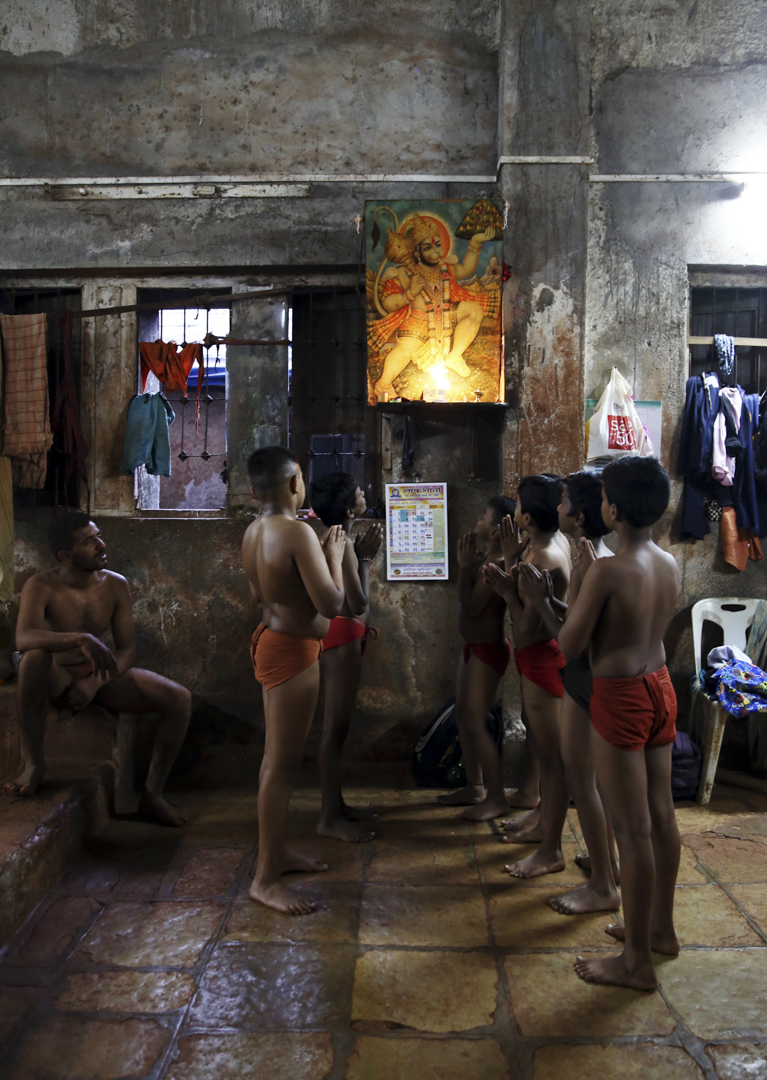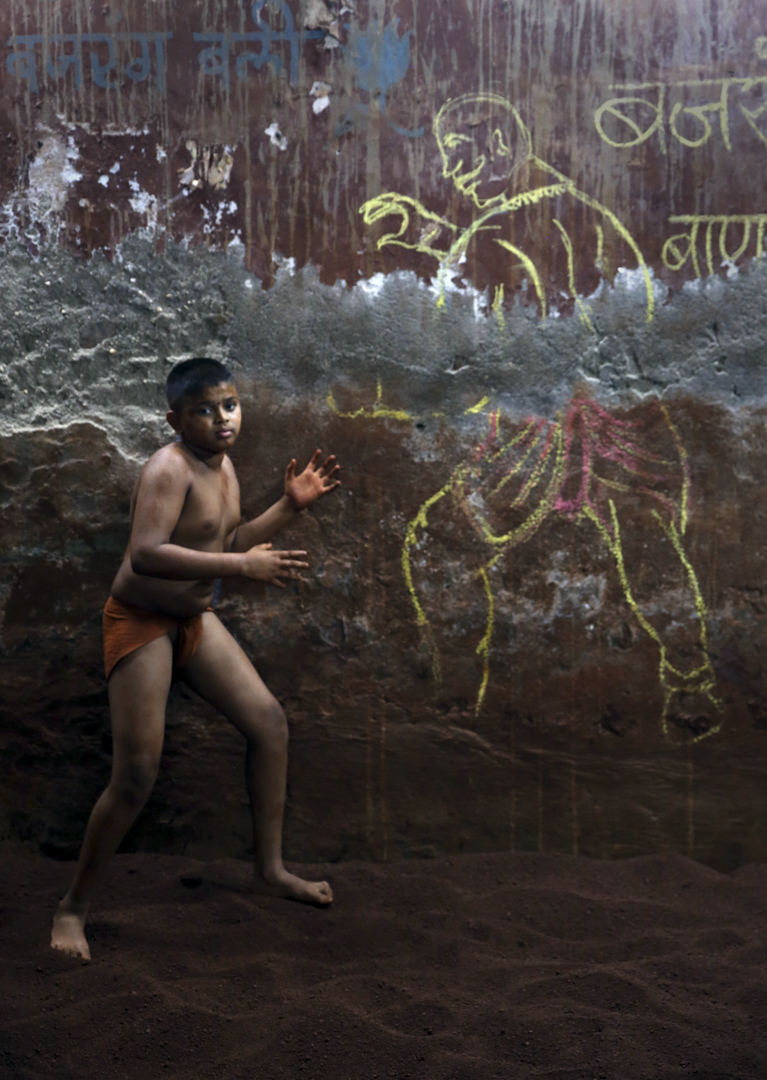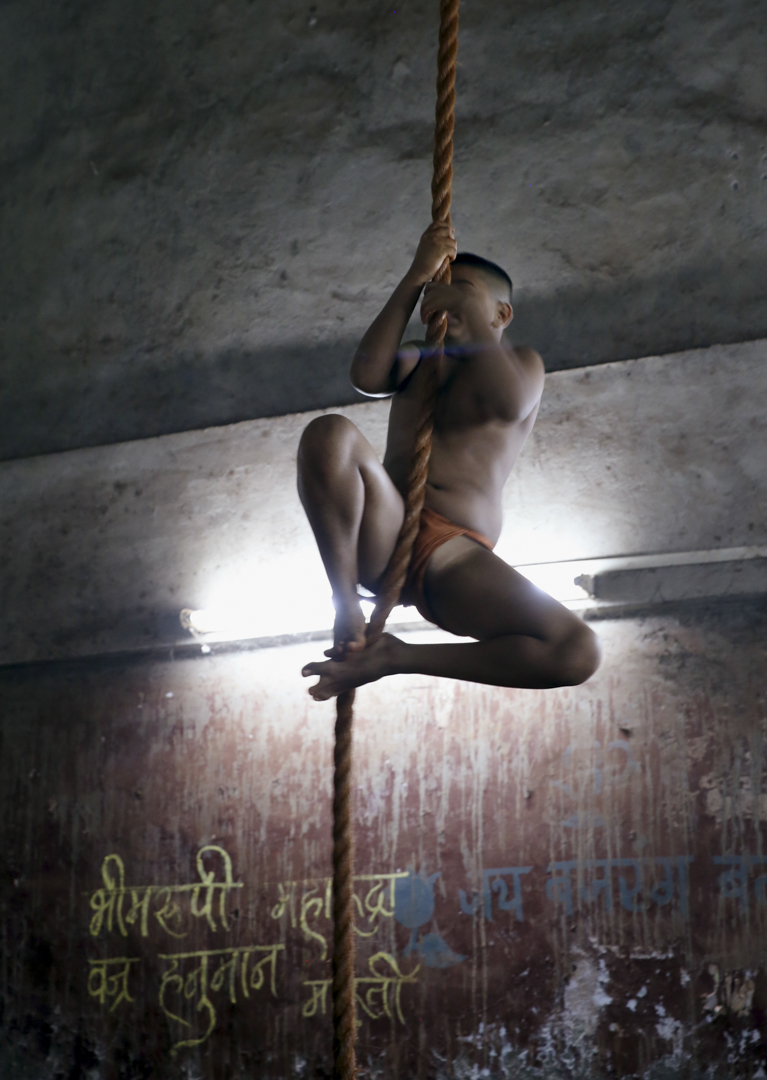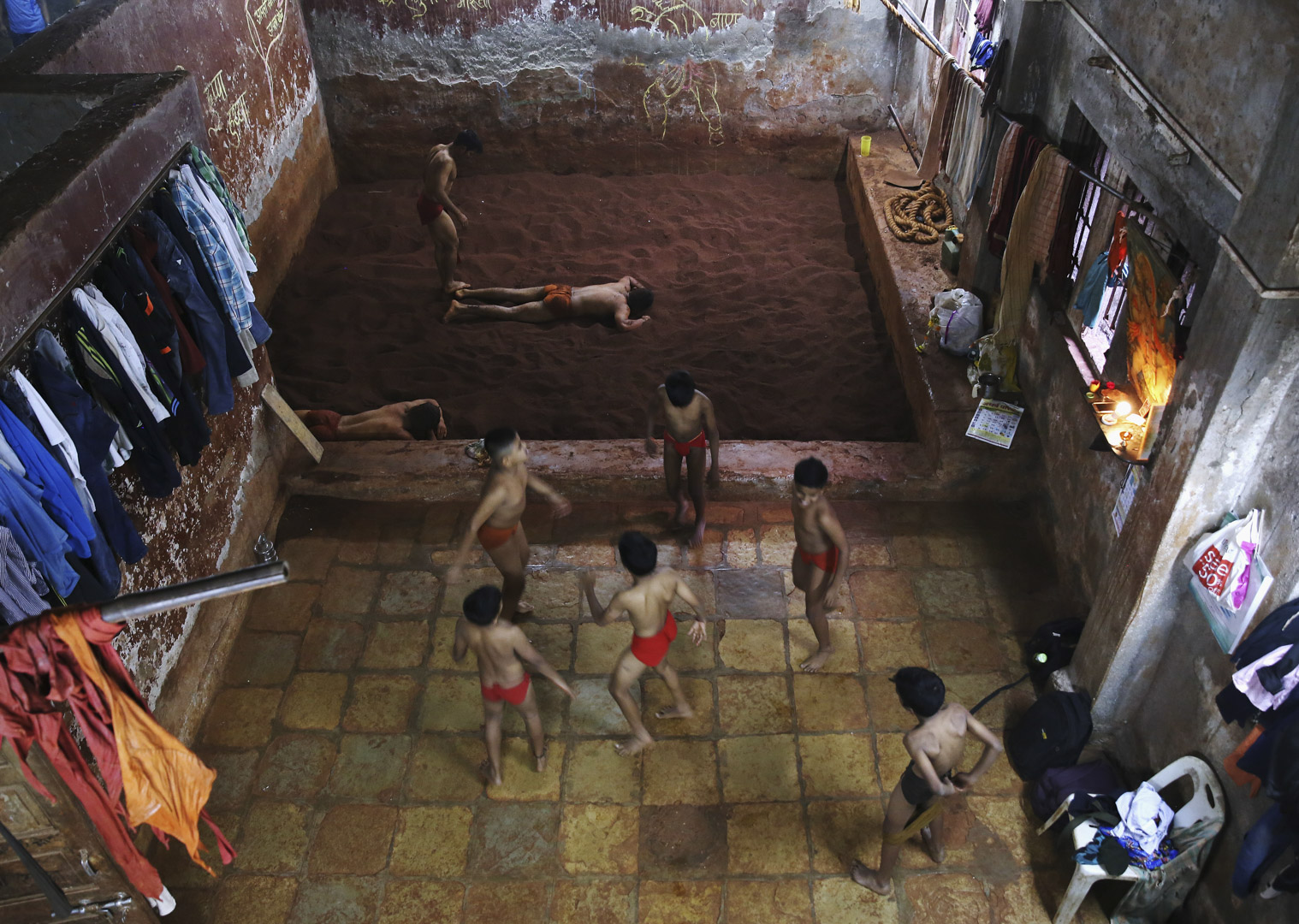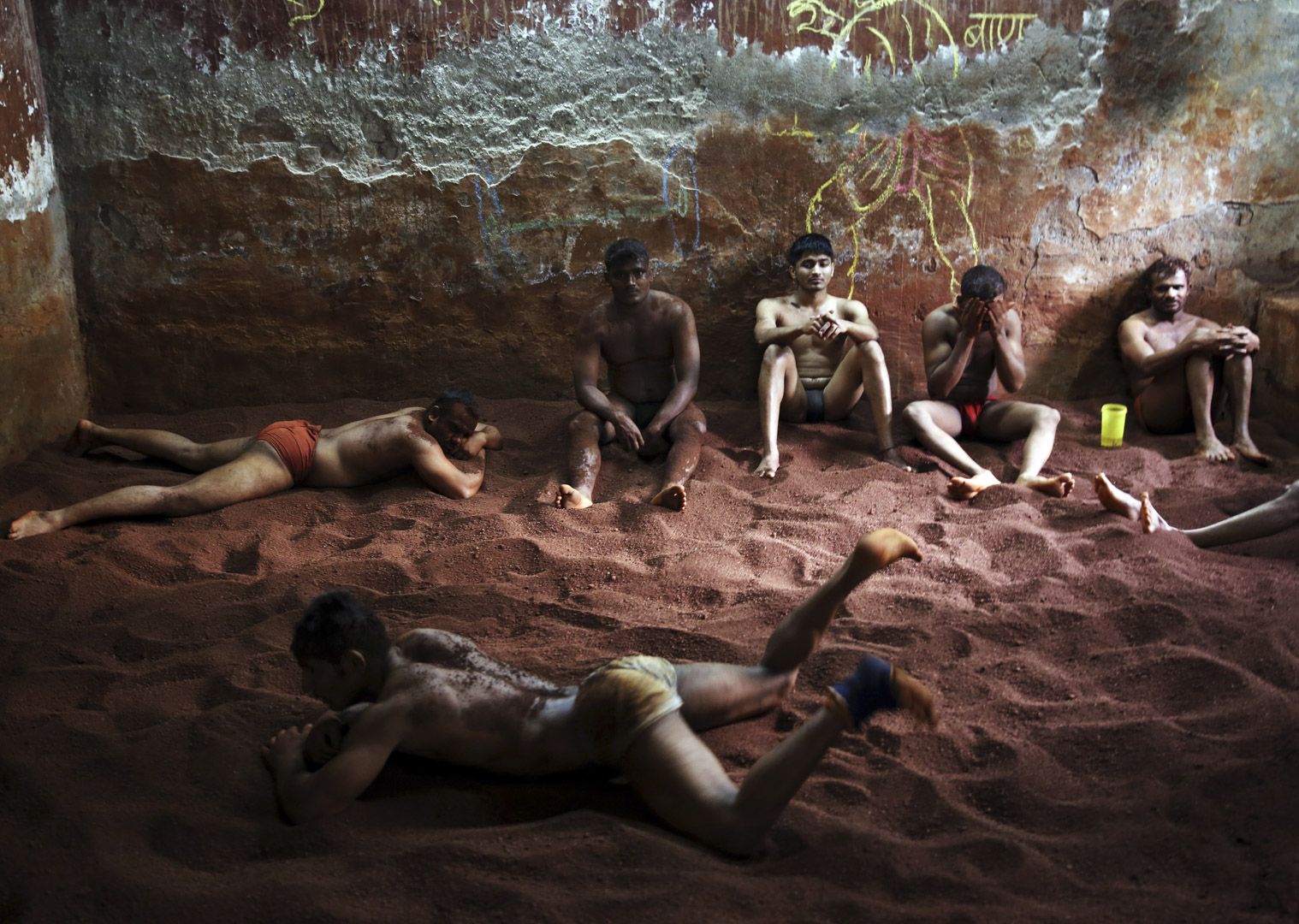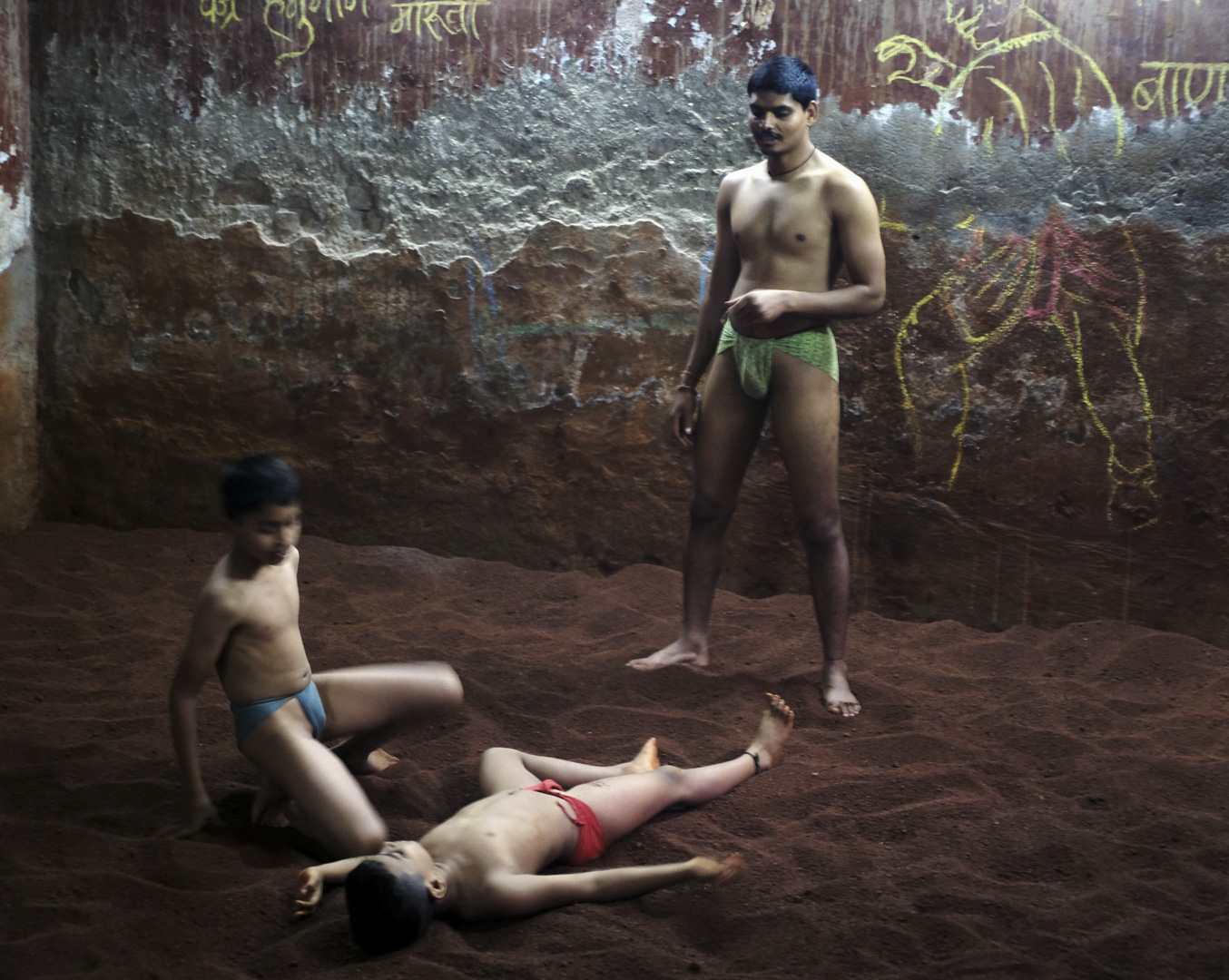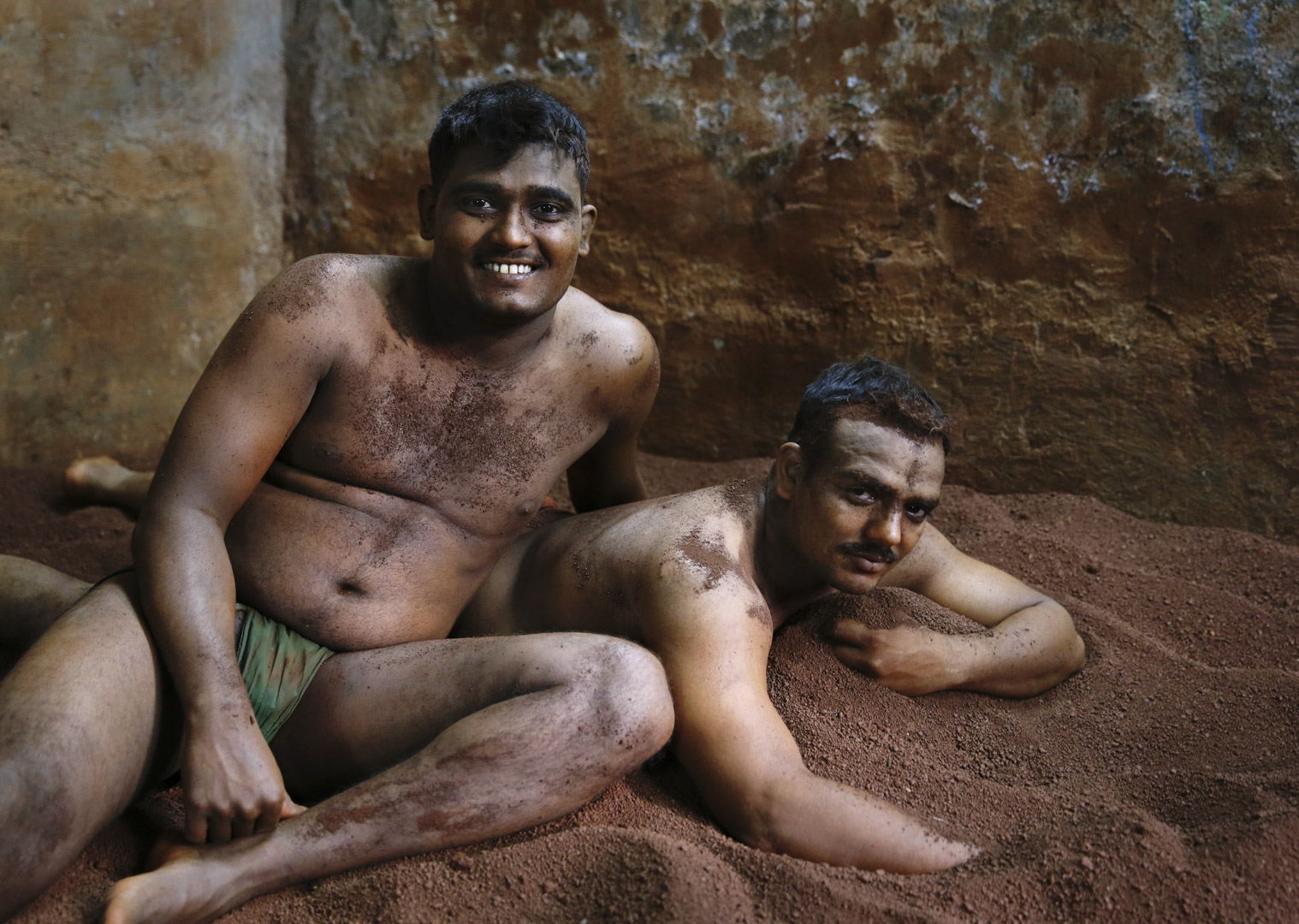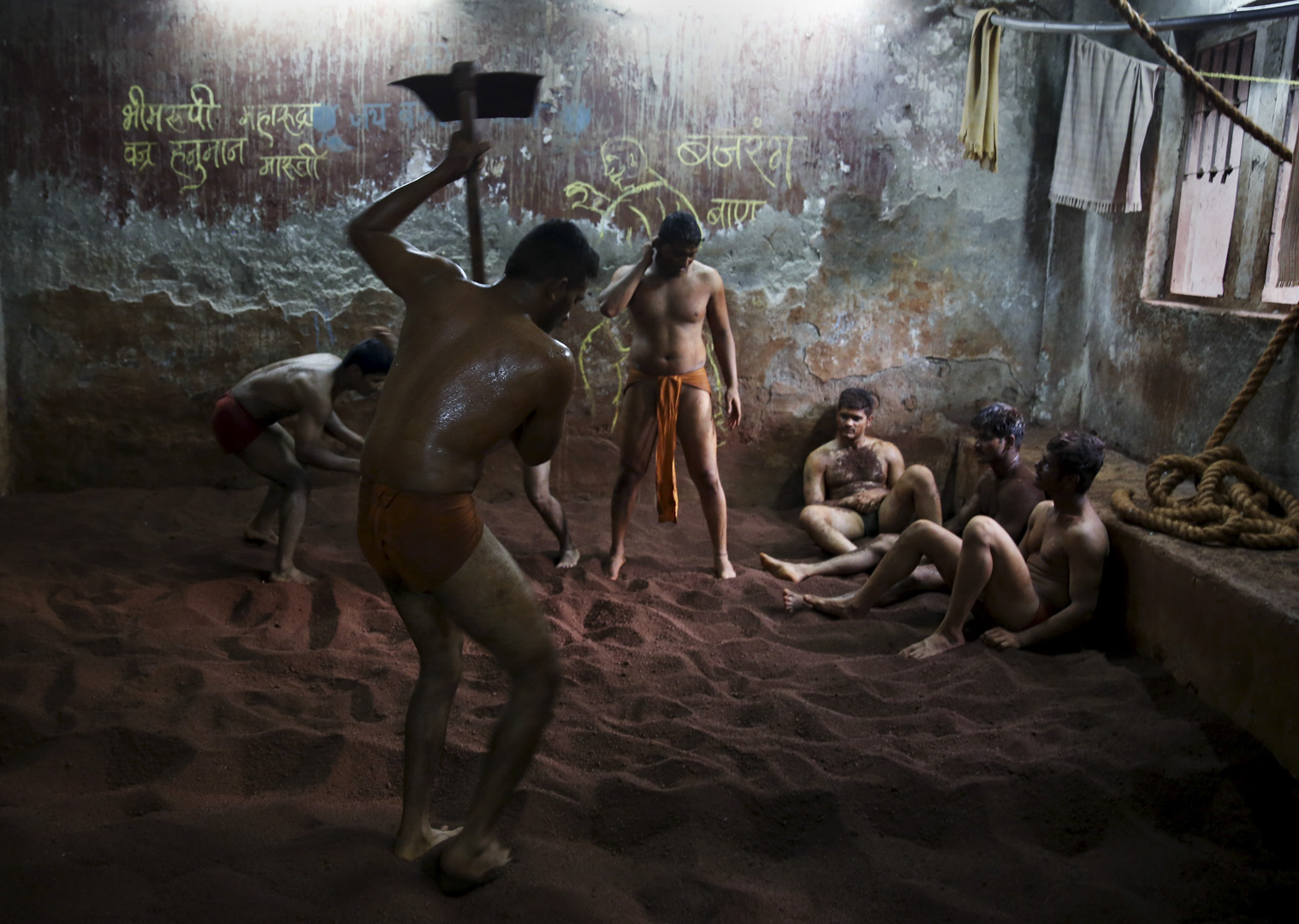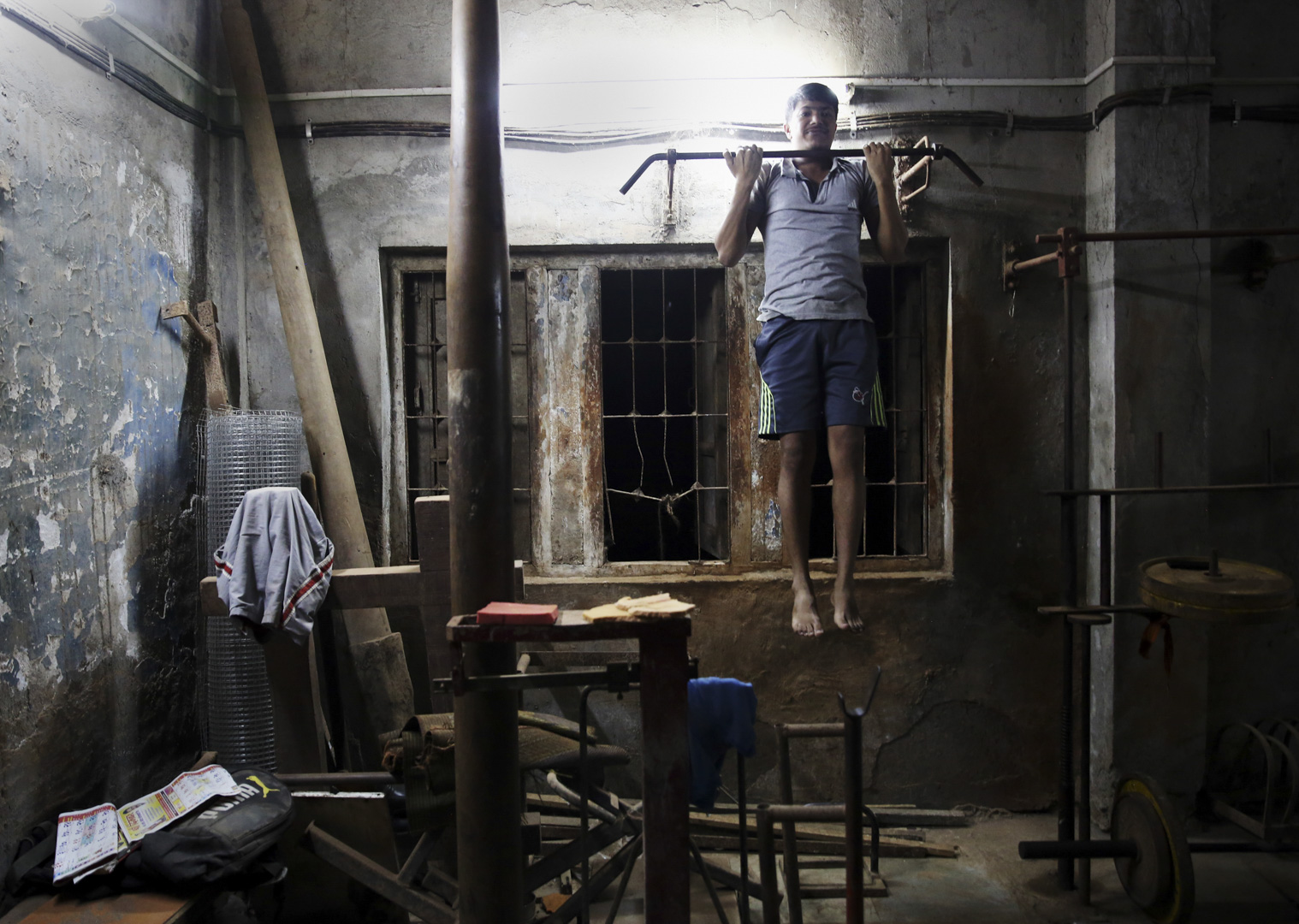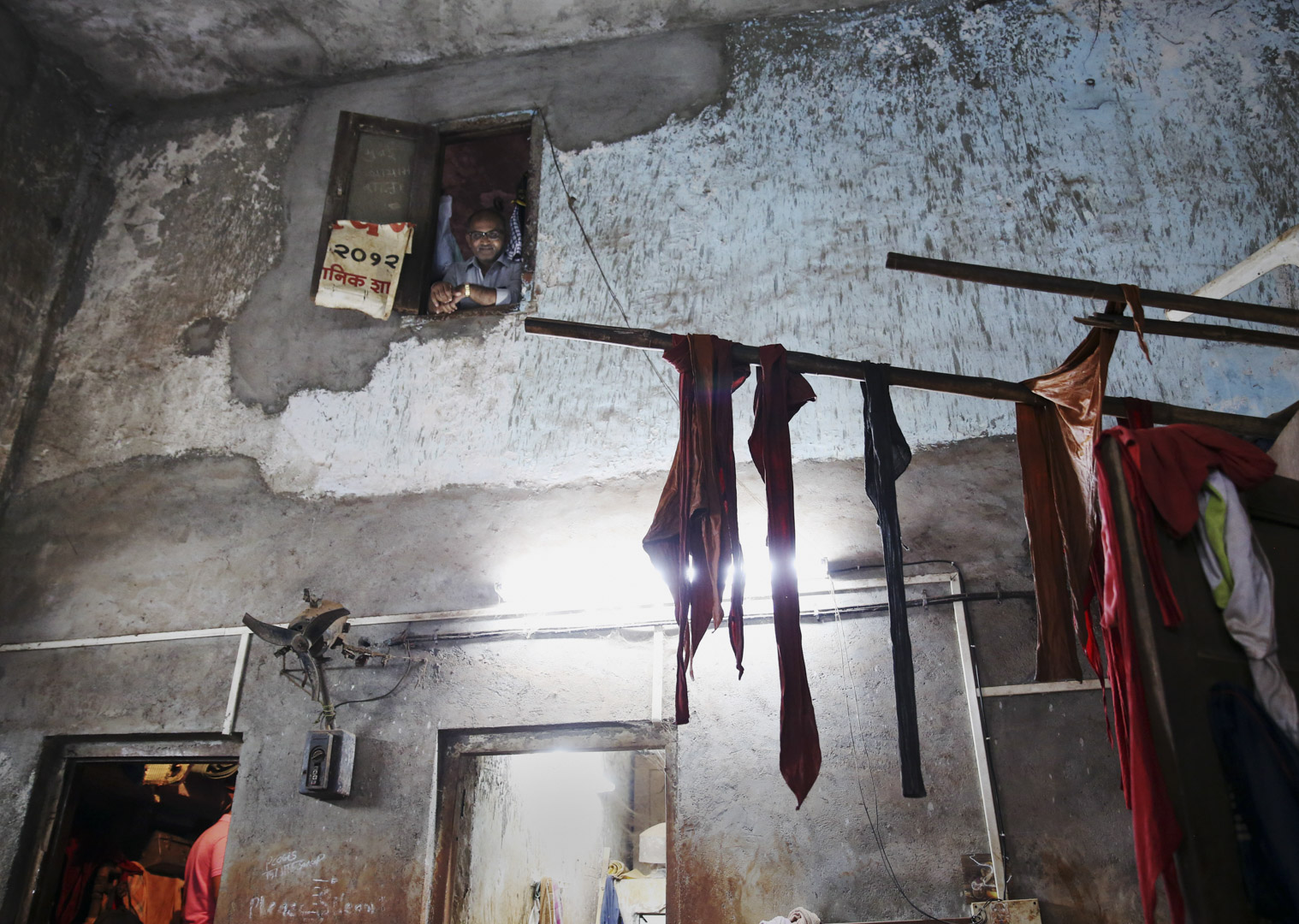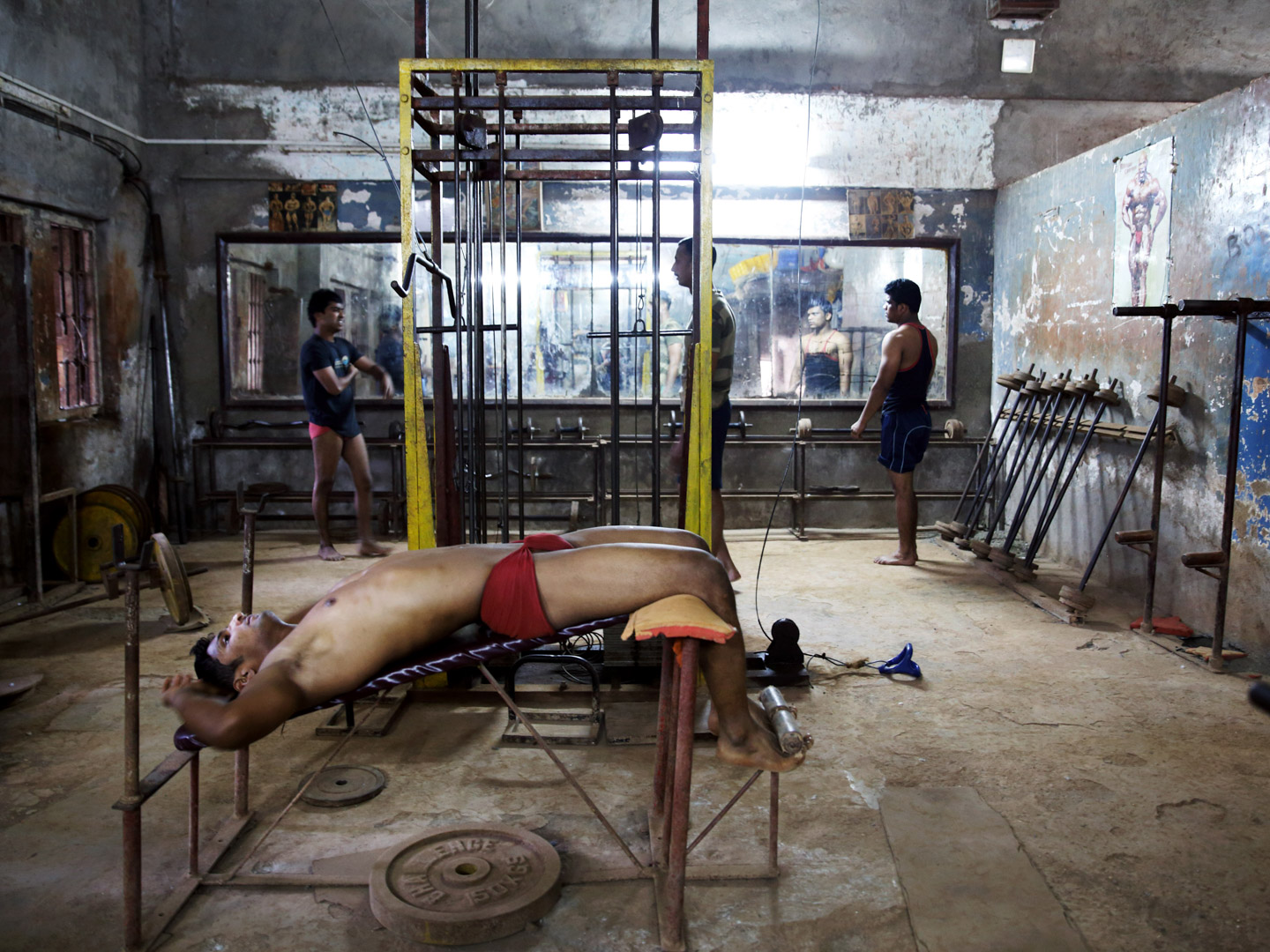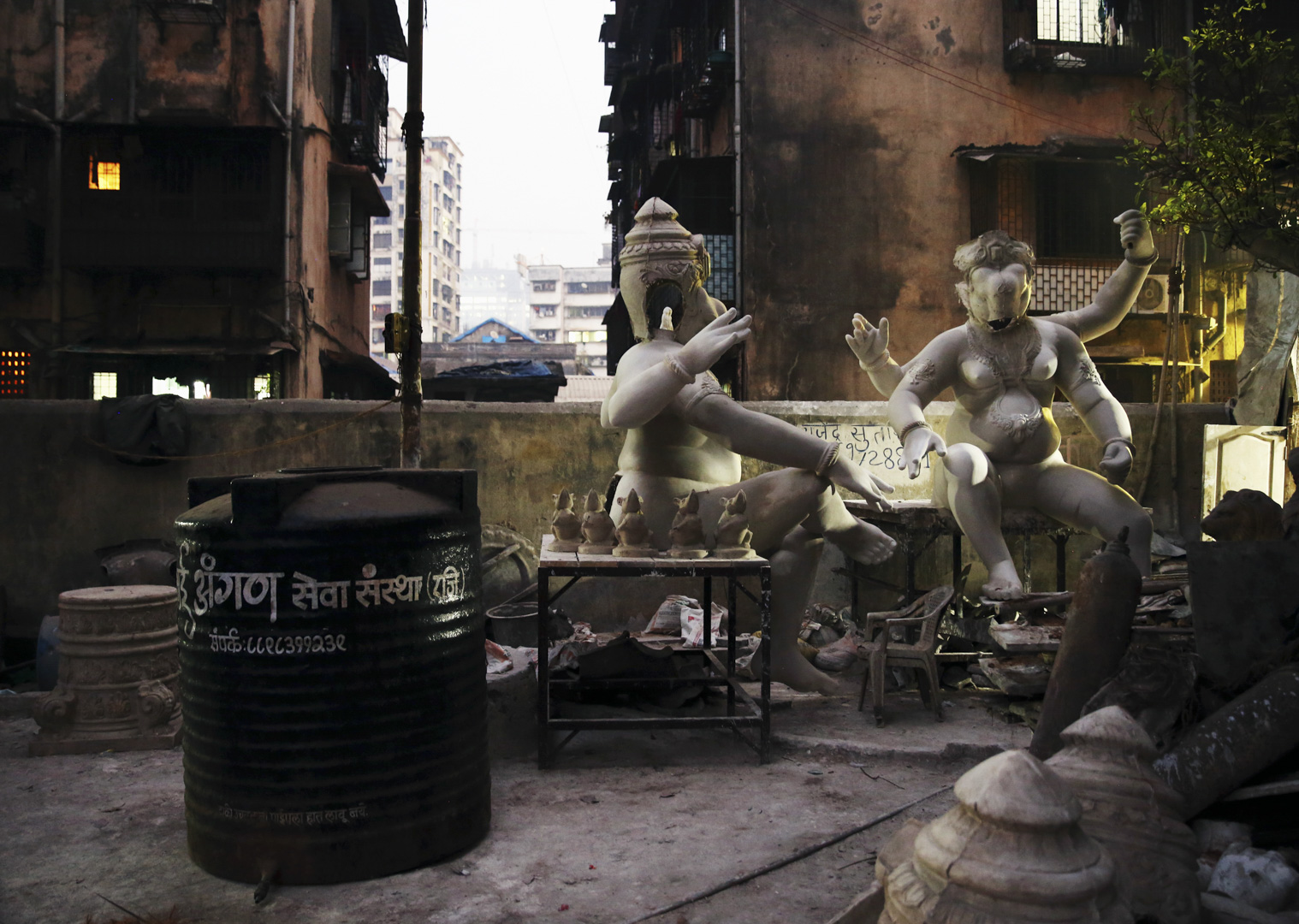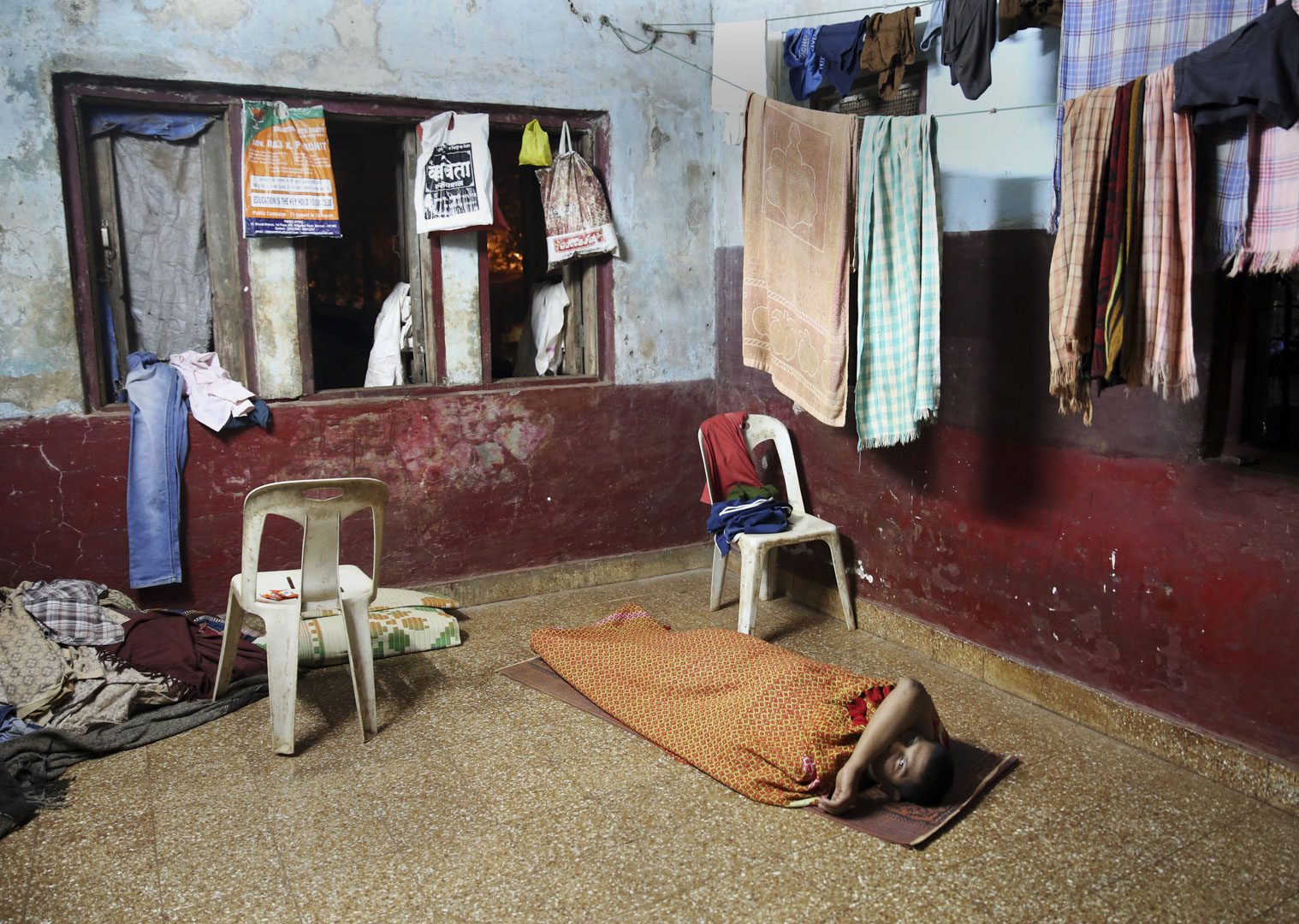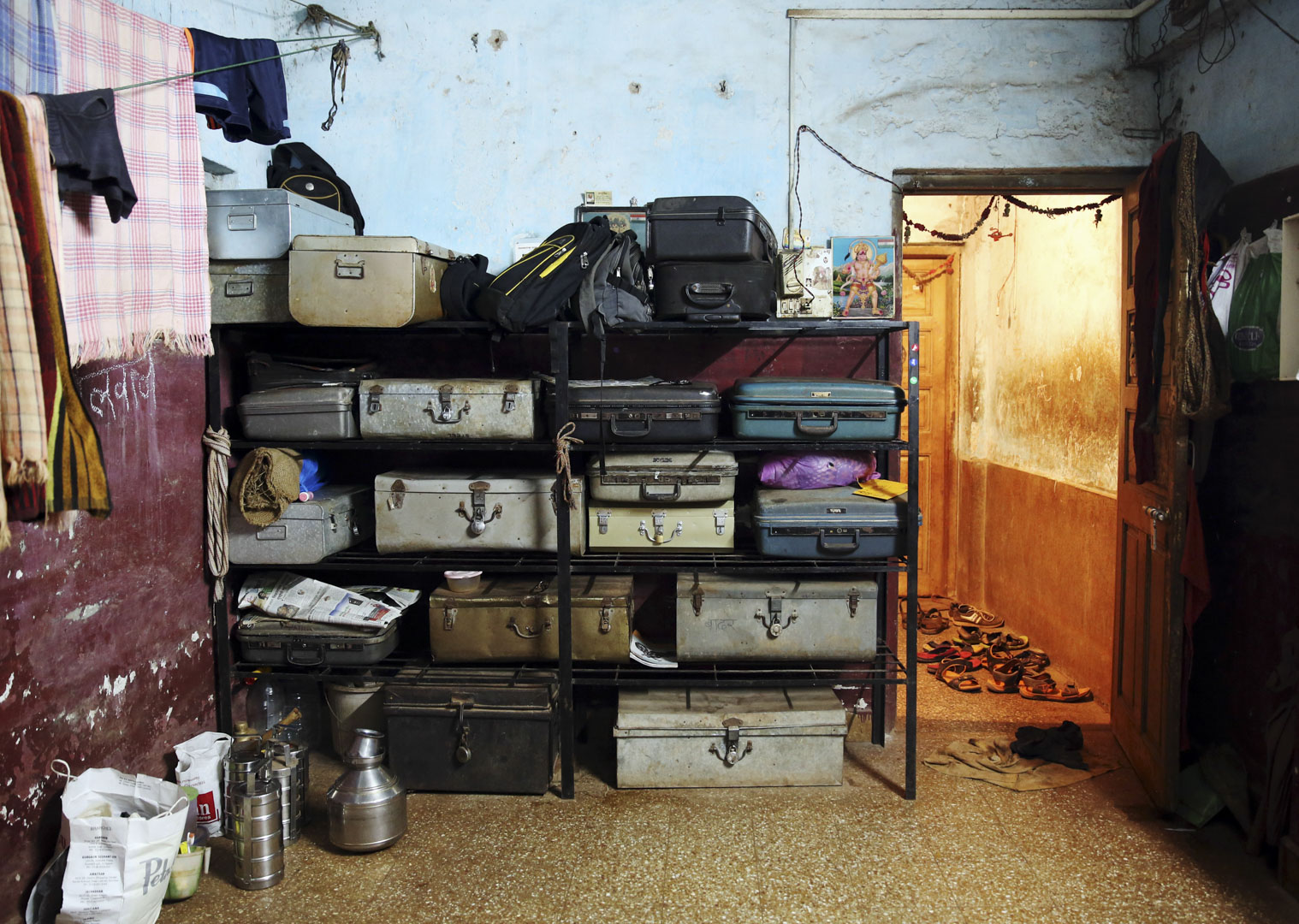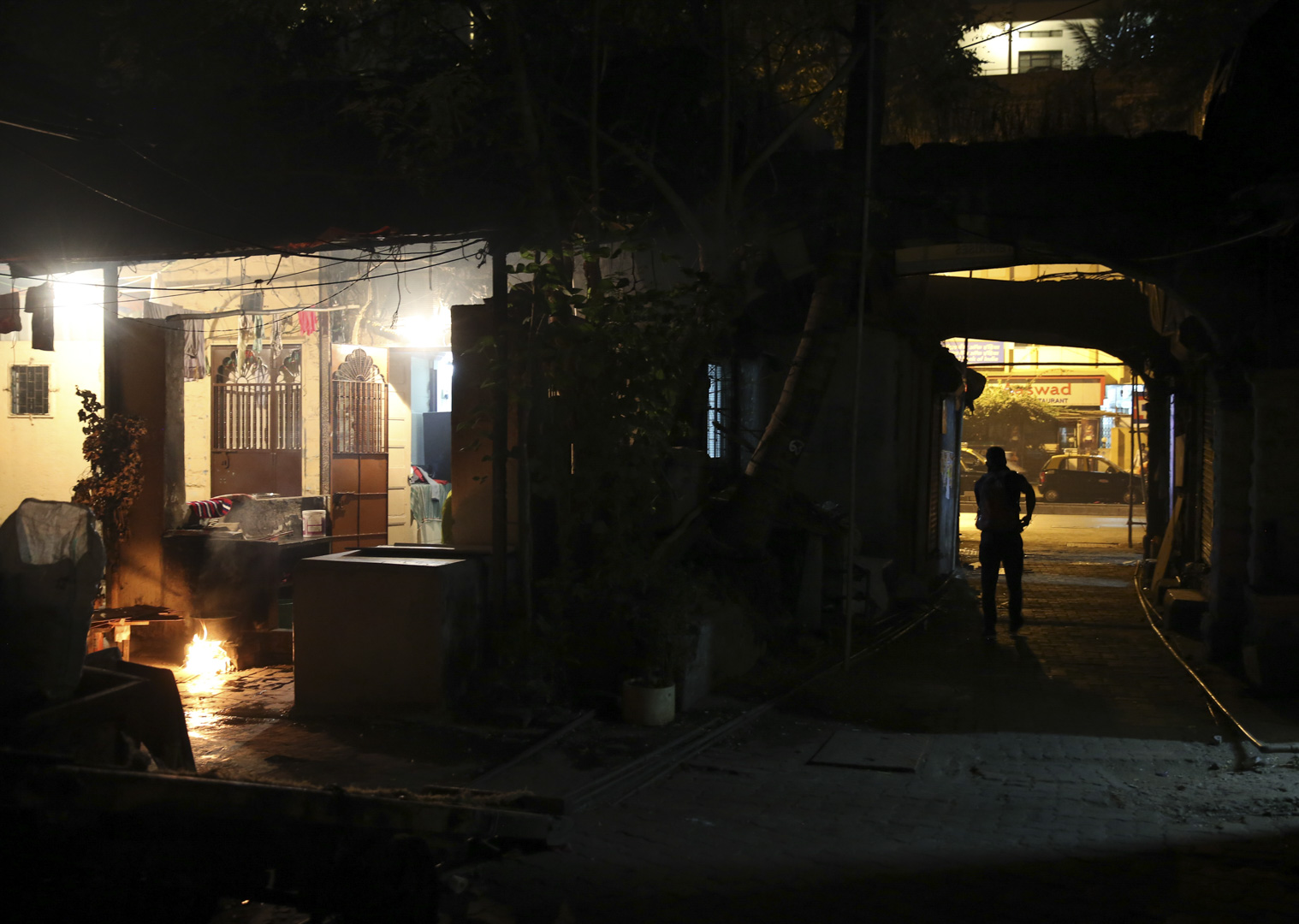The Mud Warrior of Mumbai, 2017
It is one of the oldest akharas (places where wrestling is practiced) in Mumbai, founded in 1930 at the time of Independence. Kushti is practiced in Southeast Asia and can still be observed in its traditional form in India, Pakistan or Dubai where some immigrant communities still practice it today.
In the akharas of Mumbai, young men from the countryside who arrive in the city tell the same story: the hope of getting a job as a civil servant. But most of them end up working as security guards, porters, vendors. They supplement their earnings through the dangal season (local competitions) – which begins with Dussehra and ends before the rains.
Despite its many similarities with modern western wrestling, Indian wrestling also has some differences: women are allowed to practice kushti – however, wrestlers of both sexes must commit to Samkhya, a philosophy that prescribes the adoption of an ovo-lacto-vegetarian diet. Tobacco, sex and alcohol are also strictly prohibited, and recreational activities are limited outside of sport.
Kushti is practiced in earthen pits, where the soil is mixed with special spices, honey, or butter, to keep the earth soft on the skin. First of all, they bend as in judo and obey the god Hanuman (Monkey God with immense strength) whose altar is placed above the pit. The wrestlers of India aspire to reach the international level in order to raise funds and become full-time athletes. However, these ambitions often conflict with the modest traditions of their forefathers, who emphasized community rather than individual success.


